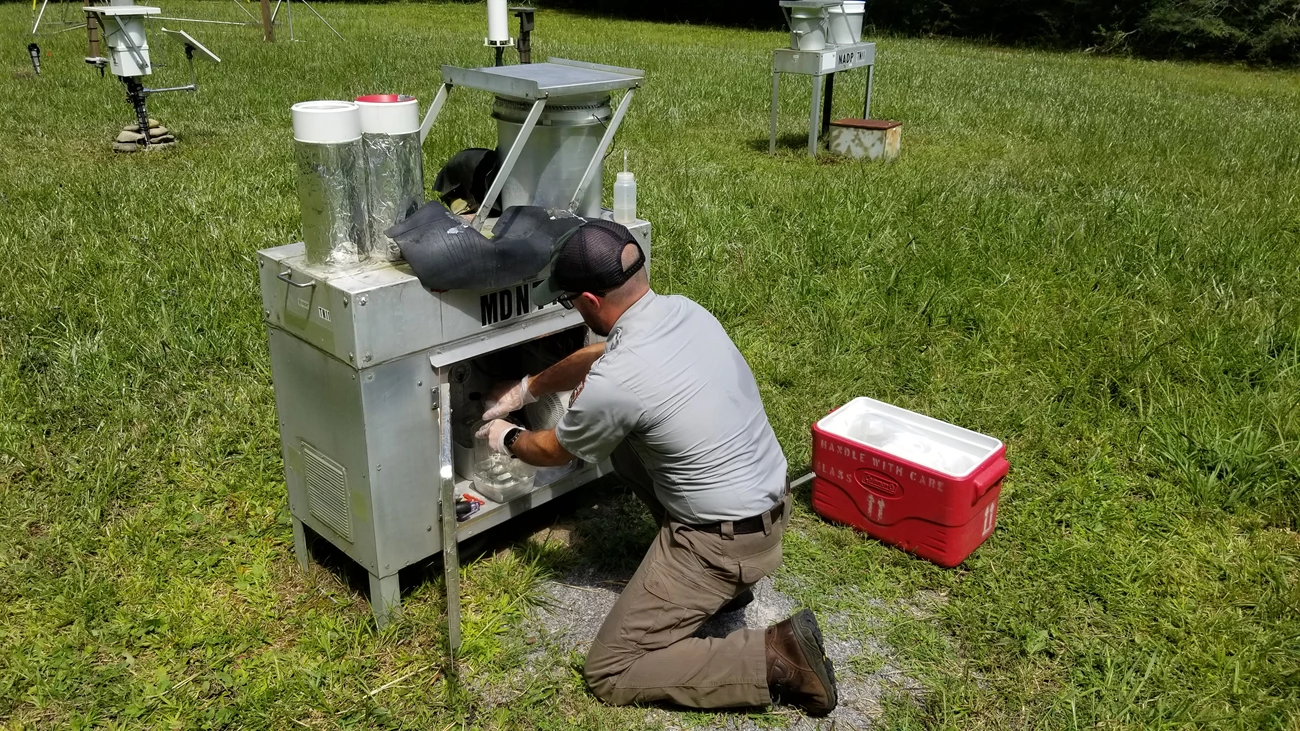
NPS/Jim Renfro
Mercury air pollution is transported through the atmosphere in gaseous and particulate forms. When these compounds are deposited by rain, snow, or fog it is called wet deposition. Under the right conditions, deposited mercury can be converted to methylmercury - a highly toxic form that is readily magnified to high concentrations in food webs that may cause harm to fish and wildlife in parks. We monitor wet deposition in parks by collecting precipitation and analyzing it for mercury.
Who is monitoring and where?
NPS staff and partners collect wet deposition in parks as part of the National Atmospheric Deposition Program (NADP) Mercury Deposition Network (MDN). This multi-agency cooperative network monitors mercury in precipitation at roughly 80 sites across the U.S. Several of these monitoring sites are inside parks or are close enough to be considered representative of park air quality conditions. Check out the Mercury tab on the NPS Air Quality Monitoring map to see where these sites are located. When selecting deposition monitoring sites, the NPS considers:
- Data gaps
- Air quality concerns
- Effects to park resources, including fish and wildlife
- Regional representation
What equipment do we use and how does it work?
- Duration:
- 26.952 seconds
An air quality scientist describes how we monitor the wet deposition of mercury. Video courtesy of Jim Renfro/NPS
Precipitation is collected using an automated bucket system. When precipitation falls onto the sensor (shown above), a mechanical arm removes the lid, allowing precipitation to collect in an insulated enclosure called a chimney. The chimney houses mercury samplers. When the sensor dries, the automated system returns the lid to the chimney to minimize evaporation and sample contamination.
Every Tuesday, the site operator replaces the exposed samplers, using clean techniques, and returns the sample bottle containing any precipitation to the NADP Mercury Analytical Laboratory in Madison, WI where it is analyzed to determine the concentration of mercury.
- Duration:
- 27.023 seconds
An air quality monitoring site operator explains the rain gage system. Video courtesy of Jim Renfro/NPS
In addition to the sample collection system, each site also uses a rain gage to precisely monitor the total amount of precipitation at the site (shown above). The rain gage works by recording the weight of collected precipitation which is later translated into precipitation amount.
How are the data used?
Wet deposition data are useful for:
- Recording levels of mercury deposition in parks
- Identifying wet deposition trends for mercury
- Assessing the effectiveness of deposition reduction strategies
- Informing emission reduction policies
- Improving atmospheric modeling
- Understanding the ecosystem effects of deposition
Park-specific wet deposition information on Mercury is being developed and will be available on the NPS Air Quality Conditions & Trends website. Additional data summaries and deposition maps are available through the MDN website.
Last updated: August 7, 2025
